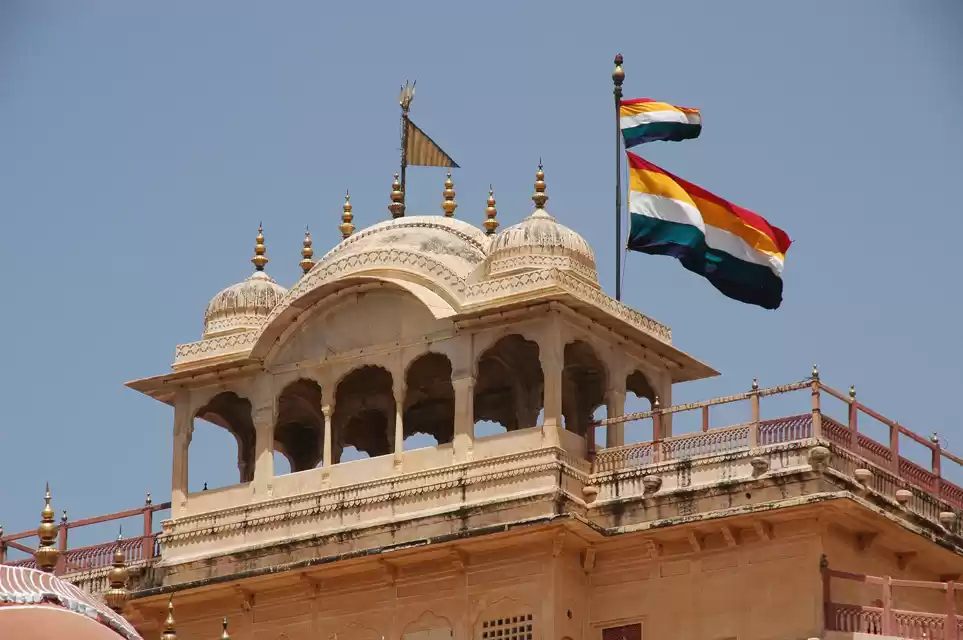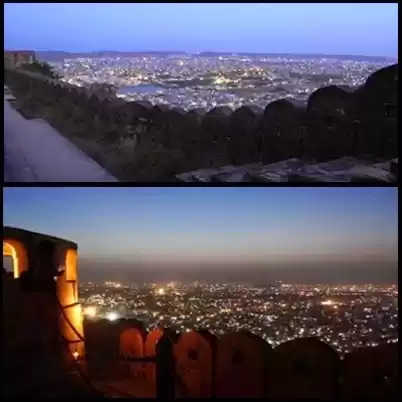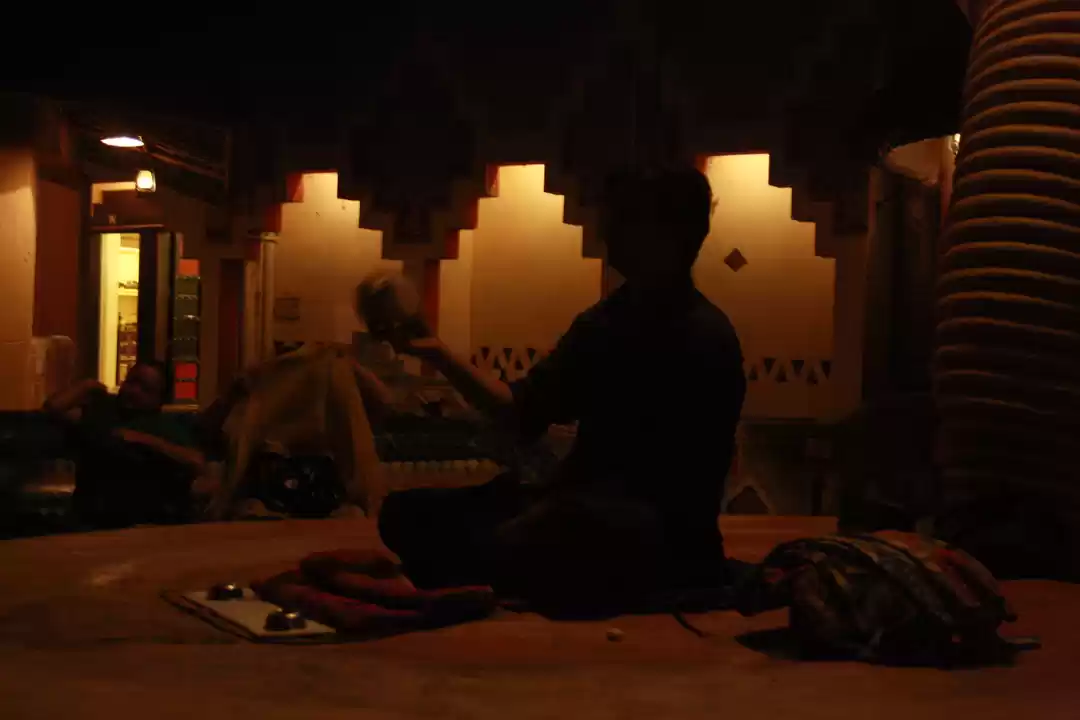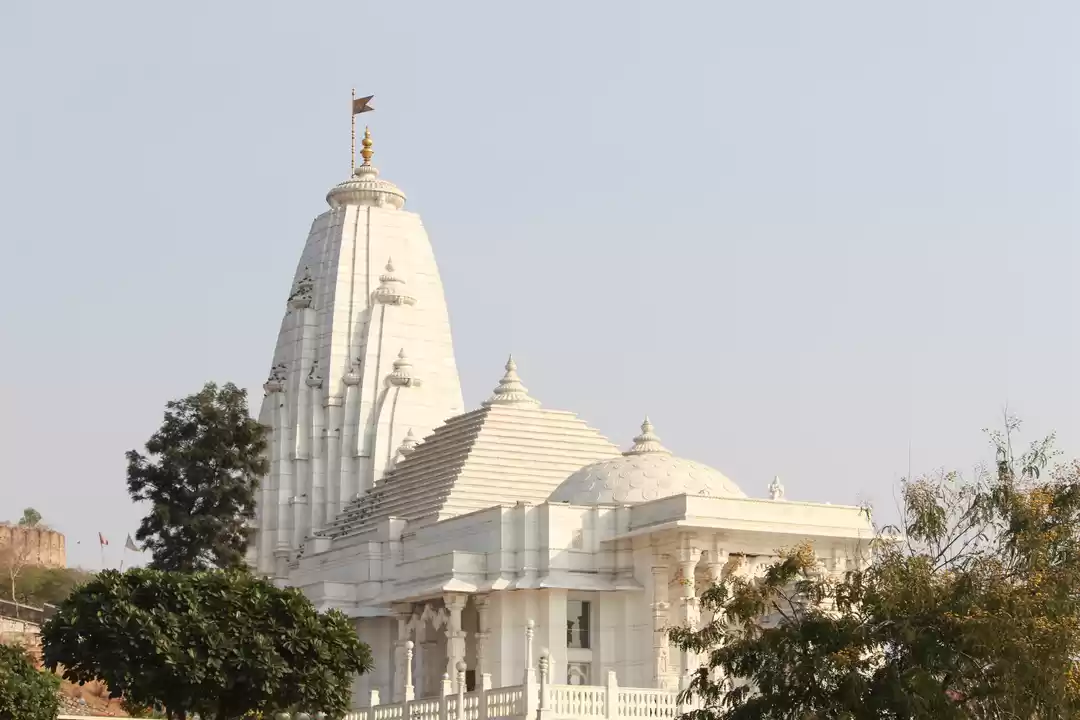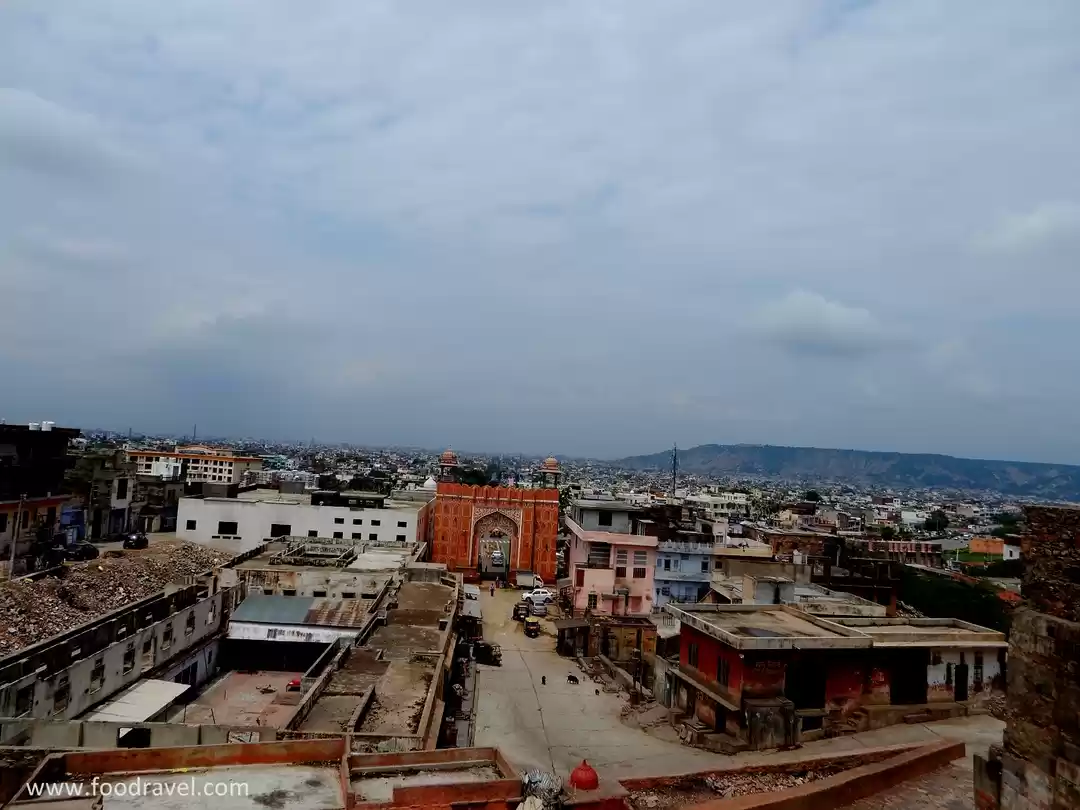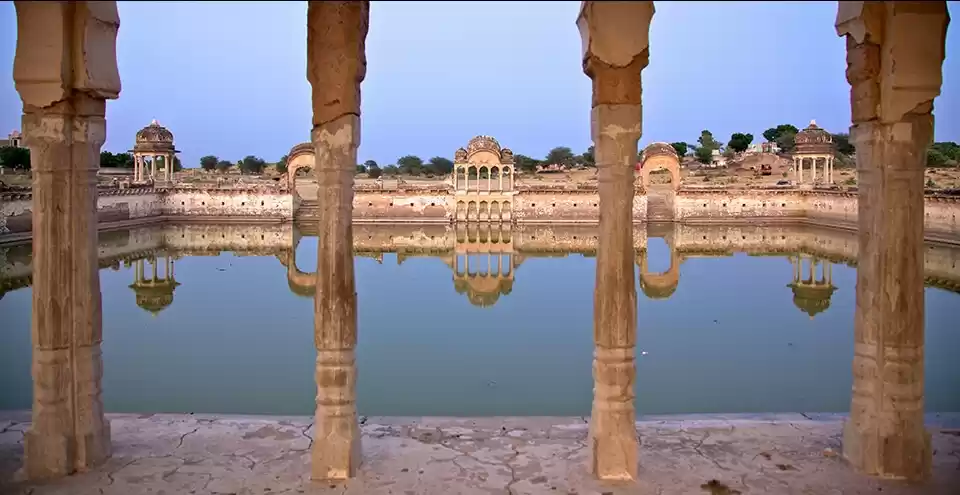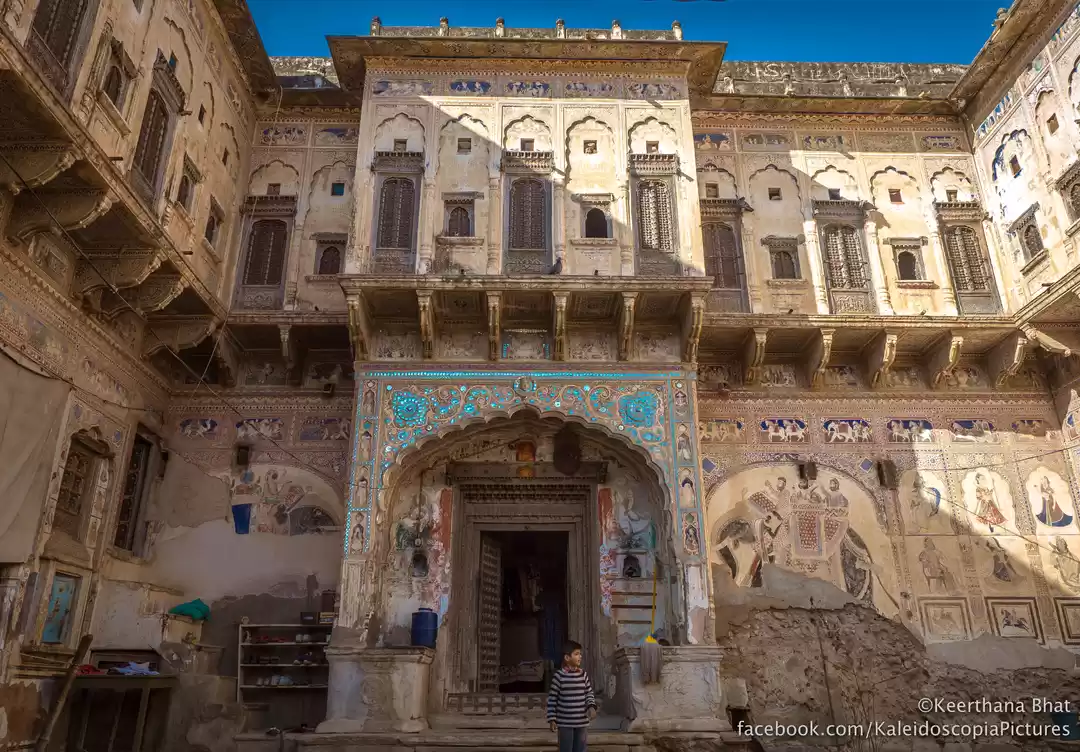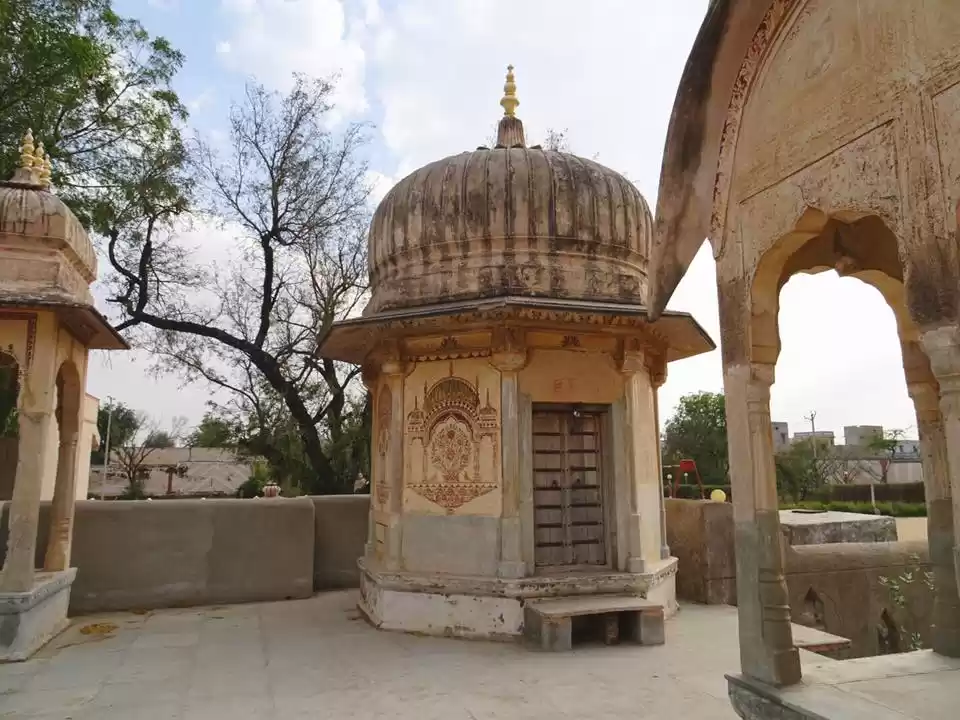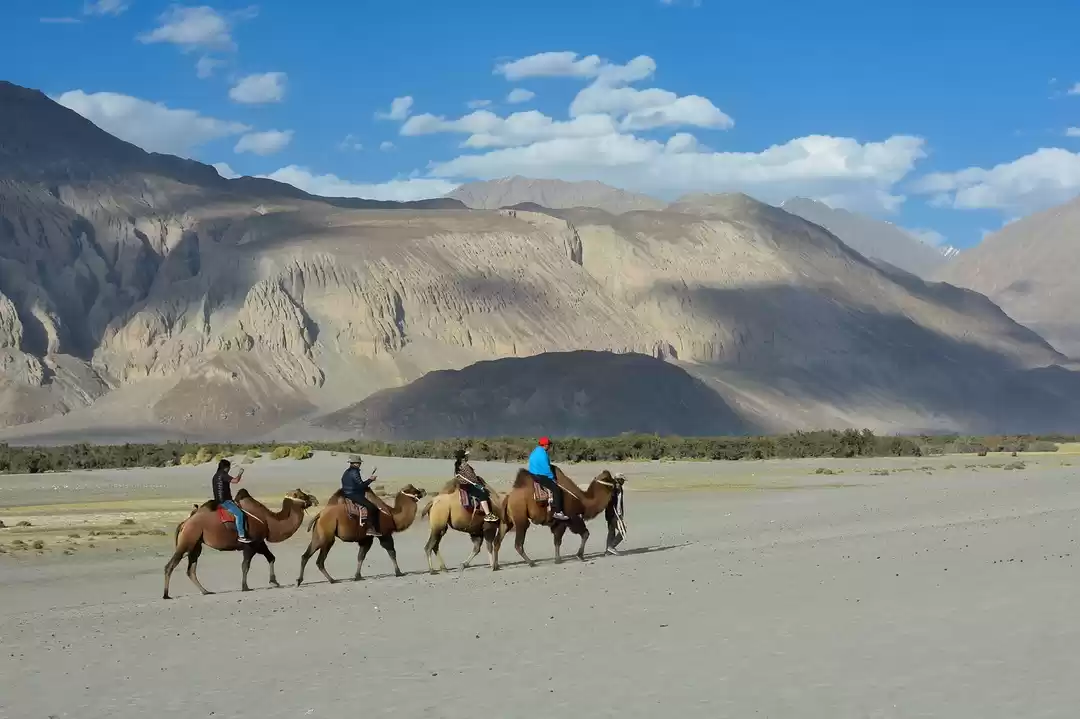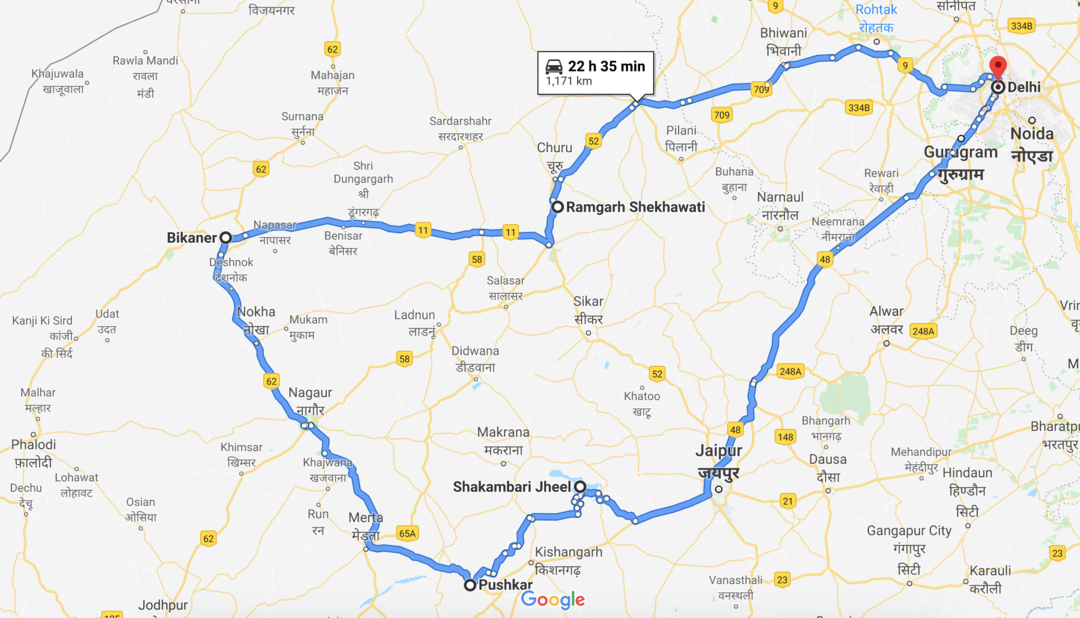Shekhawati is a region in the north-eastern part of Rajasthan, India, that comprises the districts of Jhunjhunu, Sikar, Churu, and Nagaur. It is known as the "open-air art gallery" of India, as it boasts of hundreds of havelis (mansions) adorned with exquisite frescoes (paintings) that depict the history, culture, and mythology of the region.
Shekhawati is also home to some of the most impressive forts, palaces, temples, and wildlife sanctuaries in Rajasthan, offering a glimpse into the glorious past and the natural beauty of the state. Shekhawati is a perfect destination for those who love art, architecture, history, and adventure, as it offers a variety of attractions and activities to suit every taste and preference.
Shekhawati Havelis
The havelis are the main attraction of Shekhawati, as they showcase the artistic and architectural brilliance of the region. The havelis are large mansions built by the wealthy merchants and traders of Shekhawati, who commissioned local artists to decorate their walls and ceilings with intricate and colorful frescoes. The frescoes depict scenes from Hindu epics, legends, folklore, social life, and even British and European influences. The havelis are a testament to the prosperity and culture of Shekhawati, and each one has its own unique style and theme. Some of the most famous havelis in Shekhawati are:
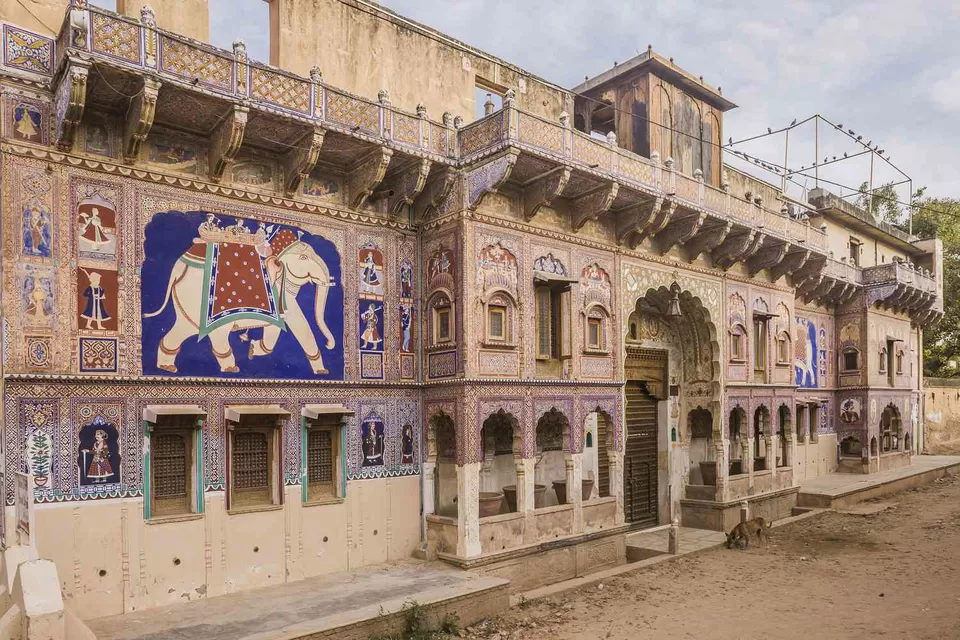
Mandawa Haveli: Located in the town of Mandawa, this haveli was built in the 18th century by Thakur Nawal Singh, the founder of the town. It features a beautiful courtyard, a museum, and a terrace that offers a panoramic view of the town. The haveli is now a heritage hotel that allows visitors to experience the royal lifestyle of the past.
Nawalgarh Haveli: Located in the town of Nawalgarh, this haveli was built in the 19th century by Thakur Nawal Singh II, the grandson of the founder of Mandawa. It is one of the most ornate and well-preserved havelis in Shekhawati, with exquisite frescoes depicting Krishna's life, floral motifs, and geometric patterns. The haveli also has a museum that displays antique furniture, costumes, and paintings.
Dundlod Haveli: Located in the village of Dundlod, this haveli was built in the 18th century by Thakur Kesri Singh, the ruler of Dundlod. It is a fusion of Rajput and Mughal architecture, with domes, arches, and columns. The haveli has a library, a drawing room, and a dining hall, all decorated with elegant frescoes and furniture. The haveli is also a heritage hotel that offers horse safaris, camel rides, and cultural programs.
Shekhawati Forts
The forts in Shekhawati are another attraction that showcase the history and heritage of the region. The forts were built by the Rajput rulers of Shekhawati, who defended their lands from the invaders and the Mughals. The forts are a symbol of the power and glory of the Rajput dynasty, and they display the finest examples of Rajasthani architecture and craftsmanship. Some of the most impressive forts in Shekhawati are:
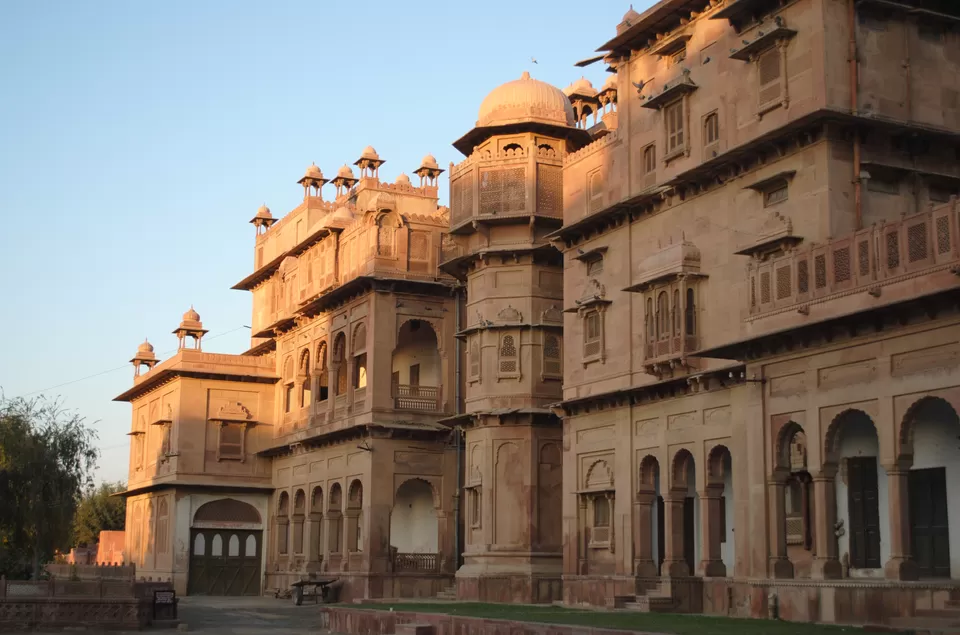
Junagarh Fort: Located in the city of Bikaner, this fort was built in the 16th century by Rao Bika, the founder of Bikaner. It is one of the few forts in India that has never been conquered, and it houses several palaces, temples, and museums within its walls. The fort is famous for its intricate carvings, mirror work, paintings, and silverware.
Khetri Mahal: Located in the town of Jhunjhunu, this palace was built in the 18th century by Bhopal Singh, the ruler of Khetri. It is also known as the "Wind Palace", as it has no windows and is ventilated by the wind. The palace is a masterpiece of Rajput architecture, with arched balconies, courtyards, and pillars. The palace is also adorned with beautiful frescoes and sculptures.
Alsisar Mahal: Located in the village of Alsisar, this palace was built in the 19th century by Thakur Guman Singh, the ruler of Alsisar. It is a splendid example of Indo-Saracenic architecture, with domes, turrets, and lattice windows. The palace is surrounded by lush gardens and fountains, and it has a swimming pool, a spa, and a bar. The palace is now a luxury hotel that hosts the famous Magnetic Fields Festival, a music and arts festival, every year.
Shekhawati Wildlife
The wildlife in Shekhawati is another attraction that offers a contrast to the arid landscape of the region. Shekhawati is home to some of the most diverse and rich flora and fauna in Rajasthan, and it has several wildlife sanctuaries and national parks that protect and conserve the natural habitats and species. Shekhawati is a paradise for wildlife lovers, as it offers a chance to witness the exotic and endangered animals and birds in their natural environment. Some of the best wildlife attractions in Shekhawati are:
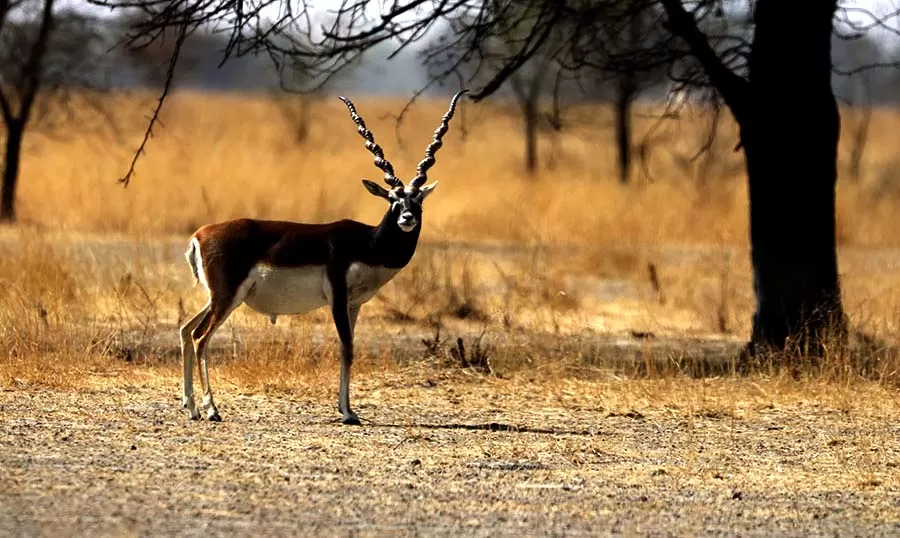
Tal Chhapar Sanctuary: Located in the Churu district, this sanctuary is a haven for blackbucks, the state animal of Rajasthan. The sanctuary covers an area of 719 hectares, and it has a flat saline depression that supports the growth of grasses and shrubs. The sanctuary is also home to other animals, such as chinkaras, nilgais, foxes, and jackals, and birds, such as harriers, eagles, and larks.
Ranthambore National Park: Located in the Sawai Madhopur district, this park is one of the largest and most famous national parks in India, and it is known for its tigers. The park covers an area of 1334 square kilometers, and it has a variety of terrain, such as hills, lakes, rivers, and forests. The park is also home to other animals, such as leopards, sloth bears, crocodiles, and deer, and birds, such as peacocks, kingfishers, and owls.
Sariska Tiger Reserve: Located in the Alwar district, this reserve is another popular destination for tiger sightings in India. The reserve covers an area of 866 square kilometers, and it has a dry deciduous forest that supports the growth of dhok, salar, and khair trees. The reserve is also home to other animals, such as hyenas, wild dogs, monkeys, and boars, and birds, such as partridges, quails, and eagles.
Shekhawati Festivals
The festivals in Shekhawati are another attraction that add color and vibrancy to the region. Shekhawati celebrates a number of festivals throughout the year, that reflect the cultural and religious diversity and richness of the region. The festivals are a time to enjoy the music, dance, food, and art of Shekhawati, and to witness the traditions and customs of the people. Some of the most popular festivals in Shekhawati are:

Gangaur: This is a festival that celebrates the union of Lord Shiva and Goddess Parvati, and it is observed in the month of March or April. The festival is especially important for women, who worship the idols of the divine couple and pray for the well-being of their husbands. The festival is marked by processions, songs, dances, and fairs, and the women dress up in colorful attire and jewelry.
Teej: This is another festival that celebrates the love of Lord Shiva and Goddess Parvati, and it is observed in the month of July or August. The festival is also significant for women, who fast and pray for the longevity and happiness of their husbands. The festival is marked by swings, mehndi, bangles, and sweets, and the women wear green clothes and accessories.
Holi: This is a festival that celebrates the victory of good over evil, and the arrival of spring, and it is observed in the month of February or March. The festival is famous for its colors, as people smear each other with gulal (colored powder) and water, and express their joy and love. The festival is also marked by bonfires, songs, dances, and delicacies, and the people wear white clothes and caps.
Diwali: This is a festival that celebrates the return of Lord Rama from his exile, and the triumph of light over darkness, and it is observed in the month of October or November. The festival is famous for its lights, as people decorate their homes and streets with diyas (earthen lamps) and candles, and display their creativity and artistry. The festival is also marked by fireworks, prayers, gifts, and sweets, and the people wear new and bright clothes and jewelry.
Shekhawati Travel Tips
Here are some useful tips to help you plan your trip to Shekhawati, and make the most of your time and money in the region.
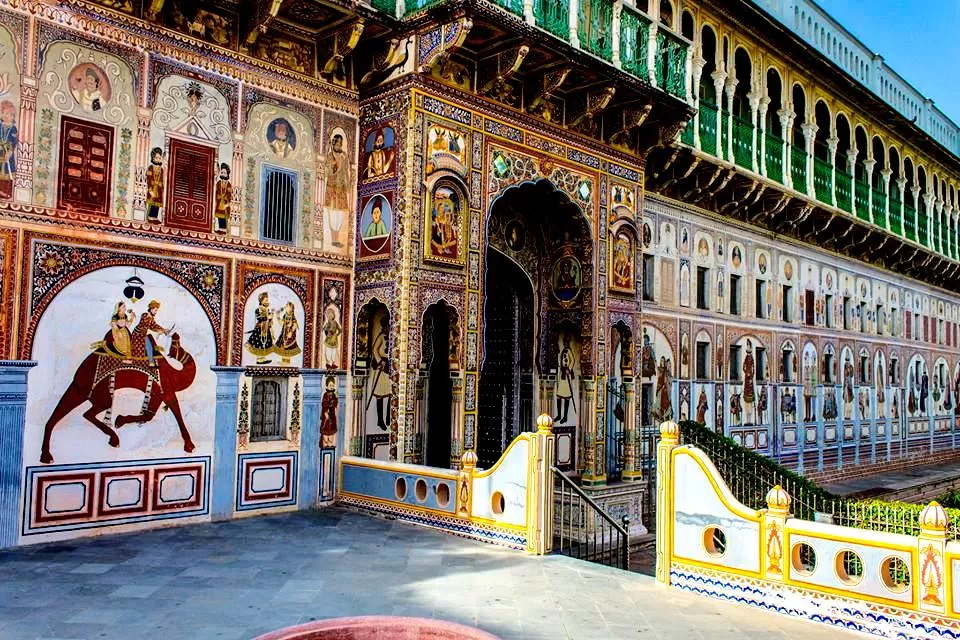
How to reach Shekhawati:
The nearest airport to Shekhawati is Jaipur International Airport, which is about 180 kilometers away. You can take a taxi or a bus from the airport to reach Shekhawati. The nearest railway station to Shekhawati is Jhunjhunu Railway Station, which is connected to major cities like Delhi, Jaipur, and Bikaner. You can also take a train to Sikar, Churu, or Bikaner, and then take a taxi or a bus to Shekhawati. You can also drive to Shekhawati by road, as it is well-connected to other parts of Rajasthan by national and state highways.
Best time to visit Shekhawati:
The best time to visit Shekhawati is from October to March, when the weather is pleasant and cool, and the region is in full bloom. This is also the time when most of the festivals are celebrated, and you can enjoy the cultural and religious fervor of the region. You can also visit Shekhawati in the monsoon season, from July to September, when the region receives moderate rainfall, and the landscape becomes green and fresh. However, avoid visiting Shekhawati in the summer season, from April to June, when the temperature can soar up to 45°C, and the region becomes dry and dusty.
Where to stay in Shekhawati:
Shekhawati offers a range of accommodation options to suit every budget and preference. You can choose from heritage hotels, resorts, guest houses, and homestays, and experience the hospitality and charm of the region. Some of the best places to stay in Shekhawati are:
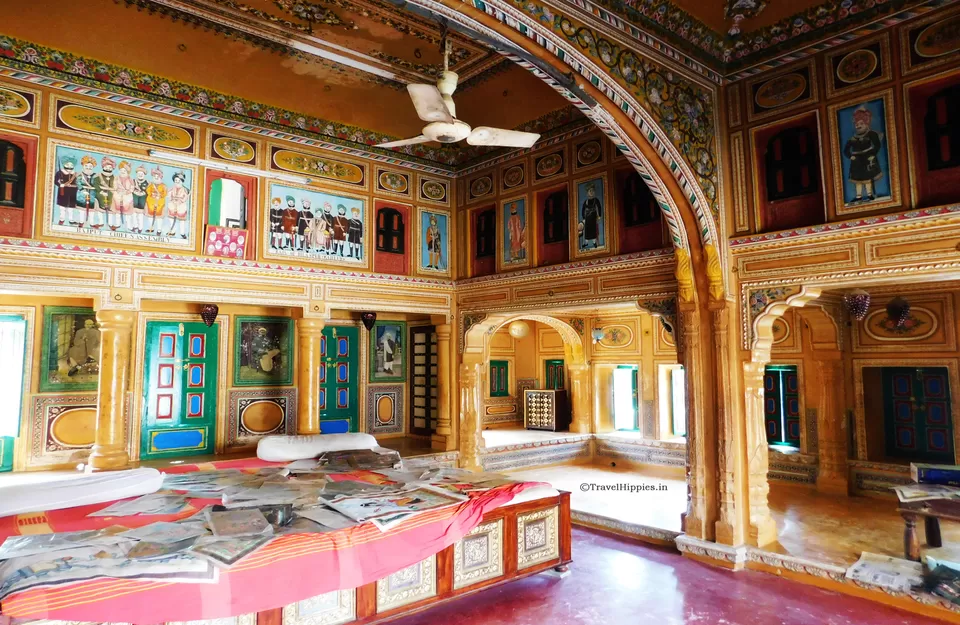
Mandawa Haveli: A heritage hotel that offers a royal stay in a historic haveli, with luxurious rooms, a museum, a terrace, and a restaurant.
Roop Niwas Kothi: A heritage hotel that offers a comfortable stay in a former palace, with spacious rooms, a swimming pool, a garden, and a bar.
Vivaana Culture Hotel: A heritage hotel that offers a cozy stay in a restored haveli, with cozy rooms, a spa, a library, and a cafe.
Hotel Shekhawati: A budget hotel that offers a decent stay in a modern building, with clean rooms, a rooftop, and a restaurant.
Shekhawati Homestay: A homestay that offers a homely stay in a traditional house, with simple rooms, a kitchen, and a courtyard.
What to eat in Shekhawati:
Shekhawati offers a variety of cuisines to satisfy your taste buds, from local Rajasthani dishes to continental and Chinese dishes. You can try some of the regional specialties, such as dal baati churma, gatte ki sabzi, ker sangri, bajre ki roti, and lassi. You can also indulge in some of the sweets, such as ghevar, halwa, and malpua. Some of the best places to eat in Shekhawati are:
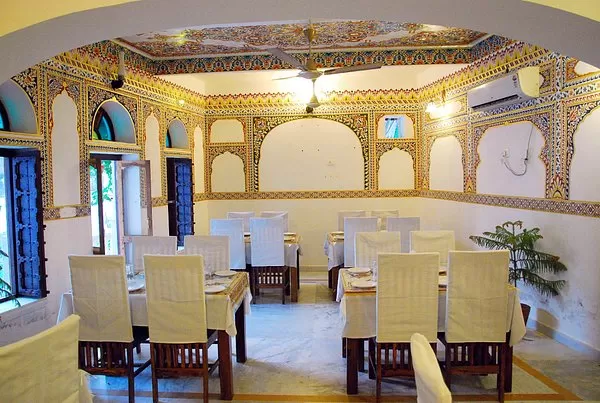
Mandawa Restaurant: A restaurant that serves delicious Rajasthani and Indian dishes, with a rooftop and a garden.
Chokhi Dhani: A restaurant that serves authentic Rajasthani and Indian dishes, with a cultural program and a puppet show.
Poddar’s Restaurant: A restaurant that serves tasty Rajasthani and Indian dishes, with a cozy and elegant ambiance.
Pizza Hut: A restaurant that serves mouth-watering pizzas, pastas, and salads, with a modern and lively atmosphere.
Shyam Sweets: A sweet shop that serves scrumptious sweets, snacks, and beverages, with a friendly and hygienic service.
Shekhawati is a region that offers a unique and unforgettable experience to its visitors, as it showcases the art, architecture, history, and culture of Rajasthan. Shekhawati is a place where you can admire the beauty and craftsmanship of the havelis and forts, witness the diversity and richness of the wildlife, and celebrate the color and vibrancy of the festivals. Shekhawati is a place where you can enjoy the hospitality and charm of the people, and taste the flavors and delicacies of the cuisine. Shekhawati is a place where you can discover the hidden gems of Rajasthan, and create memories that will last a lifetime.
So, what are you waiting for? Book your tour, safari, or hotel in Shekhawati today, and experience the land of havelis and frescoes. You can also visit Tripoto.com to find more information, reviews, and tips on Shekhawati, and to plan your perfect trip.
Tripoto is your one-stop destination for all your travel needs, as it offers you the best deals, packages, and guides for your travel. Tripoto is your travel partner, who helps you to explore the world, and to live your dreams.





